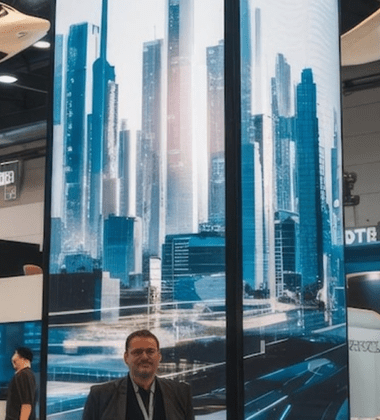The Global Products Expo, set to take place from June 26–28, 2025, at the New Jersey Expo Center, is more than just an exhibition—it’s an experience engineered through precise, strategic design. Behind every successful booth lies a mix of design psychology, brand identity, and consumer behavior insights. In a setting where thousands of brands compete for attention, trade show design becomes a silent salesperson, guiding movement, creating emotional resonance, and influencing decisions.
Why Booth Design Psychology Matters
Visitors don’t just walk through trade shows—they experience them. From lighting and colors to layout and flow, every design element impacts how attendees perceive your brand. According to behavioral science, people subconsciously respond to environmental cues within milliseconds. Whether they stop, engage, or move on depends largely on these unspoken interactions.
In today’s experience-driven marketing landscape, brands that ignore the psychology of trade show design risk losing valuable leads to more intuitive competitors.
Key Psychological Principles That Influence Booth Engagement
1. First Impressions Happen Fast
Visitors decide whether to engage with a booth in under 5 seconds. A clear brand message, clean visuals, and emotionally resonant colors are crucial in this short window.
- Tip: Place your most impactful message at eye level and within the center of the booth’s entry zone.
- Use contrast and white space to make key elements pop without overwhelming.
2. Layout Drives Movement
Booths designed with psychological flow in mind—using open spaces, directional flooring, or curved lines—subtly guide attendees through a narrative journey.
- Avoid clutter and allow natural walking paths.
- Incorporate zones (e.g., demo area, social zone, product display) to encourage exploration.
3. Color Affects Mood and Memory
Colors have a direct psychological impact:
- Red grabs attention and conveys urgency.
- Blue builds trust and professionalism.
- Green suggests sustainability and calm—great for eco-conscious brands.
When planning for trade show design, choose a palette that reflects your brand identity and the emotional tone you want to evoke.
4. Lighting Directs Attention
Strategically placed lighting highlights products and creates ambiance. Use spotlighting to guide focus, and consider warm lighting to make spaces feel welcoming.
5. Interactive Elements Increase Retention
People remember experiences more than visuals. Touchscreens, VR demos, or hands-on product stations deepen engagement and leave lasting impressions.
The Role of Sensory Design in Visitor Flow
At expos like the Global Products Expo, the food and beverage expo, where competition is fierce, creating a multi-sensory environment can help your booth stand out. Integrating soundscapes, tactile materials, or even aromas can anchor your brand in a visitor’s memory.
For example:
- Soft, ambient music can increase dwell time.
- Textured flooring (like carpet vs. laminate) influences comfort perception.
- Scents like citrus or vanilla can elevate mood and create a brand “scent memory.”
Data-Driven Design: Using Analytics to Improve Booth Success
As more brands adopt AI and analytics tools, trade show design is becoming increasingly data-informed. Using heat maps, traffic sensors, and engagement metrics, exhibitors can measure which areas attract attention, where people stop, and what content drives interaction.
Post-event, this data informs better layouts, signage placement, and visitor flow strategy for future expos.
Final Tips for an Impactful Trade Show Design
- Incorporate storytelling: Let your booth walk visitors through your brand story.
- Think vertically: Don’t waste valuable vertical real estate—hanging signs or tall structures help you stand out in crowded halls.
- Seamless tech integration: Screens, tablets, and QR codes should feel like part of the design, not an afterthought.
- Brand consistency: Fonts, colors, and messaging should align with all other marketing materials to build trust and recognition.
Trade show design isn’t just about aesthetics—it’s a strategic tool that affects how visitors feel, think, and act. By leveraging design psychology and creating a sensory, story-driven space, your brand can stand out, connect authentically, and drive real business results.
As you prepare for your next event—especially The Global Products Expo, June 26–28, 2025, at the New Jersey Expo Center—let design be your competitive advantage.
Stay connected for more insights on how to make your booth unforgettable.





